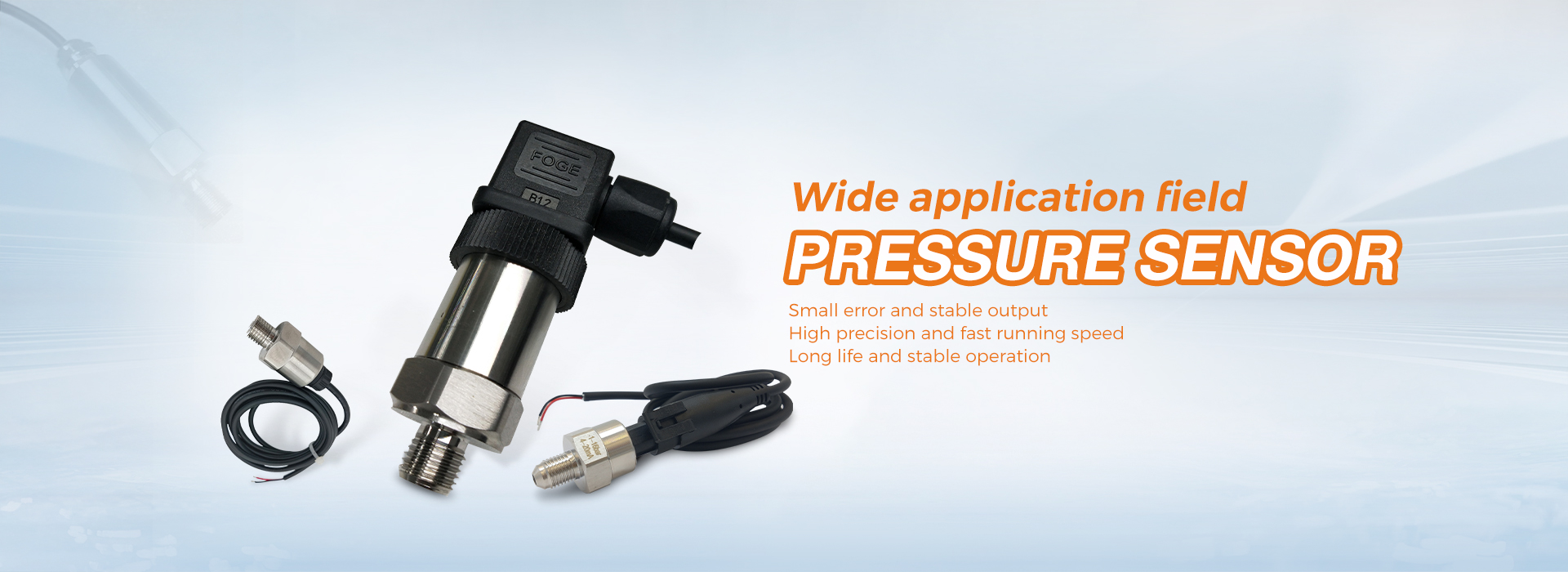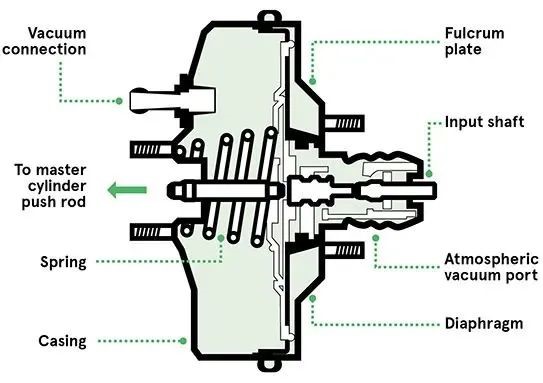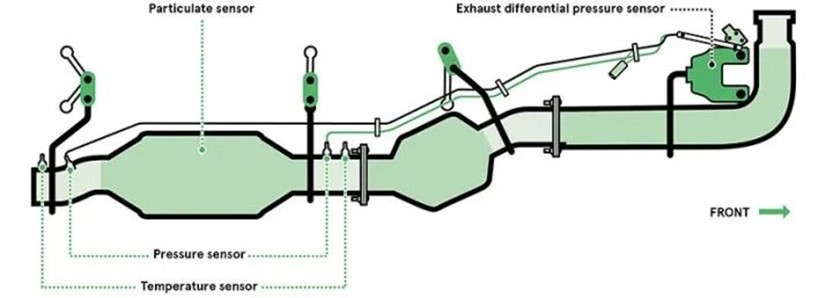If pressure sensors were not used in modern cars, our driving experience would be much worse.
In fact, most critical systems in vehicles rely on pressure sensors to measure and monitor key parameters to improve our driving experience, enhance safety, and reduce pollution. In recent years, benefiting from technological innovation, pressure sensors have achieved better vehicle driving.
1. Detecting early faults in hydraulic brakes
The feeling of easy braking that you are accustomed to, as well as the responsiveness of the pedal under your feet, are all composed of complex components, including pressure sensors. The in car system detects the pressure you apply on the pedal and amplifies it to make your efforts more effective.
These systems use absolute pressure sensors to monitor the vacuum maintained in two independent chambers within the brake servo system.
Under normal operating conditions, pressing the brake pedal will cause atmospheric pressure to flow into one of the chambers, increasing the pressure on the diaphragm and thus increasing the force applied to the master cylinder. After releasing the brake pedal, a vacuum source can be used to restore the vacuum, which can be extracted through a dedicated pump or from the manifold.
If the vacuum in one or two chambers cannot be maintained or restored, a fault condition will occur. Absolute pressure sensors are used to monitor the pressure inside the chamber and alert the driver or engine management system when the pressure inside the chamber is insufficient to be effective.
If there is no method to measure the pressure inside the cabin, the system may malfunction without the driver’s knowledge, leading to a sudden loss of braking effectiveness, which is exactly when it is most needed.
Manufacturers use manifold absolute pressure (MAP) sensors in this application, which can be provided in a surface mount package and can measure pressures within the range of 10 to 150 kPa (kilopascals) with an accuracy of 1% over the entire range.
2. Optimize fuel mixture to adapt to air pressure
Maximizing the efficiency of internal combustion engines is closely related to making the fuel mixture just right for the current conditions. Of course, this includes both actual and expected engine speeds, but also adjustments to the current engine speed, engine, and manifold temperature.
However, it is not just the air temperature that needs to be measured; When adjusting the fuel mixture and ignition timing, air pressure is also an important factor. Here, the absolute pressure sensor is used to provide the required information to the engine management system (EMS).
These sensors are used to measure the pressure inside the manifold, and since air is drawn in from the surrounding area, external air pressure is also used for measurement. Atmospheric pressure has a significant impact on the fuel mixture, so by measuring air pressure and compensating for changes, EMS can adjust the engine for optimal efficiency, whether the car is at sea level or above 20000 feet above sea level.
MAP sensors are also used here, but in this case, they need to be able to measure pressures up to 400 kilopascals.
3. Automatic cleaning of exhaust filter
Diesel is one of the most common forms of fuel for vehicles, especially large transport, construction, and agricultural vehicles, and pressure sensors are crucial for keeping diesel engines as clean as possible.
The particulate filter inside the engine is used to capture soot and other particles present in the exhaust before they can be emitted into the atmosphere. Then it is necessary to clean the filter by burning off the particles.
This can be achieved by using an active system that heats the filter to the temperature at which the cigarette ash burns, or by using a passive system with a catalyst.
In active systems (see figure below), pressure sensors are used to measure exhaust gas pressure. When the pressure on the diesel particulate filter (DPF) reaches a threshold, the cleaning process will be triggered. This can be measured by using two absolute pressure sensors or differential pressure sensors.
4. Ensure the sealing of the catalytic converter
In passive systems, particulate matter in exhaust gases is disrupted by catalytic converters. In this case, pressure sensors will be used to ensure that the system can operate effectively even at lower engine temperatures.
Catalytic converters require rapid heating to function effectively. Usually, it needs to reach over 300 ° C, but the catalytic converter does the same when the engine is cold. Supplying air to the exhaust manifold triggers a heat release process, which helps to increase the temperature of the catalytic converter.
After reaching the temperature, the pump of the auxiliary air valve will be turned off and the system will be sealed with a valve. The use of an absolute pressure sensor located between the pump and the valve ensures that the valve closes correctly and protects the rest of the system from harmful exhaust gases.
5. Monitor exhaust gas recirculation
Automakers are facing pressure to reduce overall engine emissions, and one feasible approach is to recycle some of the exhaust gases. This technology is effective in both gasoline and diesel engines, as it lowers the temperature inside the combustion chamber, thereby reducing the generation and emissions of nitrogen oxides.
Controlling the engine gas recirculation (EGR) process involves using an absolute pressure sensor to monitor the pressure at the valve. Without such control, the system may become unstable, leading to excessive or insufficient gas recirculation.
Sensor manufacturers have been striving to improve their production processes to provide pressure sensors that can better withstand the harsh environments present in such applications.
Post time: Mar-18-2025





